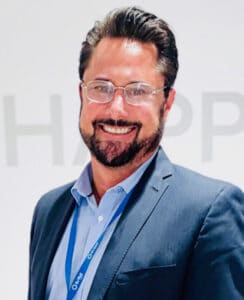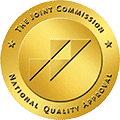In the United States, painkiller addiction is a serious problem. In 2019 alone, the National Institutes of Health (NIH) reported close to 50,000 deaths from opioid-related overdoses. The Centers for Disease Control and Prevention (CDC) reported an opioid misuse economic burden of $1.02 trillion in 2017 due to the cost of healthcare, addiction recovery treatment, lost productivity, and the strain on the criminal justice system.
Painkiller addiction doesn’t just happen to celebrities like Prince, Heath Ledger, and Tom Petty. It can happen to anyone – even those who receive legitimate prescriptions for short-term use after surgery – or those who use it to treat chronic pain.
Yes – taking too many opioid painkillers can kill you through overdose. An overdose causes severe central nervous system (CNS) depression. Your CNS is what controls your involuntary functions like your breathing and your heartbeat.
Beyond slowed and shallow breathing, opioid overdose can cause:
Many of the symptoms from painkillers are also associated with being drunk. When someone combines alcohol with these pain medicines, the risk of death increases. Why? Because alcohol also depresses the CNS.
If you notice someone exhibiting these symptoms and you know they’ve taken opioids, or struggle with prescription drug abuse, seek medical help right away. Do not let the person “sleep it off” because they may never wake up.
When used correctly, prescription painkillers can be an effective way to treat severe pain. For many, taking opioid medications even as prescribed and only as needed, can lead to addiction.
Opioids work by triggering the release of endorphins, or “feel-good” chemicals. The endorphins interact with the opioid receptors in your brain to dampen your body’s perception of pain. The result? You don’t hurt as much (or at all) even though your body is still injured. And, you feel great, too.
Once the dose wears off, you may find that you want to get those feelings again as soon as possible – and that’s the first sign you may be headed toward prescription painkiller addiction.
The longer you take opioids, the more slowly your body will produce endorphins. Over time, the dose you started with won’t produce the same euphoric effects because your body has built up a tolerance. This leads to you taking more than the prescribed dose to achieve the same effect.
Today’s medical professionals are aware of opioid risks, so it’s difficult to get your doctor to increase your dose – either in the form of a higher strength or more pills. Some may not even renew the prescription. It’s at this point that some users will resort to illegally obtained prescription painkillers, heroin, or fentanyl. Fentanyl is often stronger and laced with other chemicals, which further fuels the addiction and increases the risk of harm or death.
The phrase “opioid addiction” is the same as painkiller addiction since opioids are the active chemical in painkillers that cause addiction in painkillers and other opioids like heroin. Opioid addiction is different than stimulant addiction and benzodiazepine addiction since the active ingredients cause a very different effects in the human body and bind to different receptors within the brain. Ultimately, when you’re addicted to painkillers, it’s the opiate you’re addicted to. It doesn’t matter whether it comes from heroin or one of the many opiate medications prescribed.
That said, there are other less addictive “painkillers” on the market today, like gabapentin, that aren’t opiate-based. Gabapentin is an anticonvulsant medication that’s often used to treat nerve pain. Though it has lesser addiction potential, users can still become physically dependent on the medication.
The most commonly abused painkillers include:
If you’re taking prescribed opioids for a few days to treat acute pain, you’re not likely to become addicted. It takes about two weeks to become physically dependent on the medication.
Physical dependence means that you’ll have symptoms of tolerance (needing a higher dose to achieve the same effect) and withdrawal symptoms when you stop taking the medication. Being physically dependent doesn’t always mean you’re addicted, but it could mean that addiction is coming.
Addiction leads to behavioral changes as a result of chemical changes in the brain. Substance use becomes a priority, no matter what it may mean for users or their loved ones.
Prescription painkillers are depressants or “downers,” which means they are different from other prescription stimulant pharmaceuticals like Adderall. Prescription amphetamine abuse and misuse can progress to cocaine or meth while prescription painkillers many times progress to heroin addiction.
The longer someone engages in substance abuse, the more the body will adapt and become reliant on opioids. They may experience withdrawal symptoms if they attempt to reduce the dose or stop cold turkey. The withdrawal symptoms include:
Taking more opioids relieves the withdrawal symptoms, thus allowing the user to function, and the cycle continues.
The good news is that recovery is possible. Depending on the extent of the addiction, several treatment options are available. More serious addiction may require inpatient treatment. This type of rehab is intensive and focused on helping patients get on the road to long-term sobriety without the distractions of everyday life. Outpatient programs allow the patient to participate in a treatment program as part of their daily lives.
At Magnified Health, we’re here to help. We offer a number of addiction treatment options, personalized for the individual. If you or someone you love is suffering from a prescription painkiller addiction, get in touch with us today. You’re not alone.
Get confidential help 24/7. Call now for:
Related Articles
Get Help Now
https://www.drugabuse.gov/drug-topics/trends-statistics/overdose-death-rates
https://www.cdc.gov/policy/polaris/healthtopics/opioid/index.html
https://www.drugabuse.gov/publications/effective-treatments-opioid-addiction
Medical Advice Disclaimer
Magnified Health Systems aims to improve the quality of life for people struggling with substance use or mental health disorder with fact-based content about the nature of behavioral health conditions, treatment options and their related outcomes. We publish material that is researched, cited, edited and reviewed by licensed medical professionals. The information we provide is not intended to be a substitute for professional medical advice, diagnosis or treatment. It should not be used in place of the advice of your physician or other qualified healthcare providers.

Dr. Bickley graduated from U.C. Irvine with honors: Phi Beta Kappa, Golden Key International Honor Society, Cum Laude. He has been featured on national radio and print media. He is also a frequent lecturer at National Conferences. He holds an A.S. degree in Drug & Alcohol Studies, and two B.A. degrees in Criminology & Psychology, and masters and doctoral degree in Clinical Psychology. He is a licensed California Drug & Alcohol Counselor Level II, a licensed Clinical Supervisor and is certified in treating Eating Disorders.
Call Us Now, Our Admissions Team Is Standing By And Available 24/7.

Head Office Location:
1530 N Federal Hwy Lake Worth, FL 33460
Contact & Feedback:

We are here for you.
We are here for you, Call us and get started!
